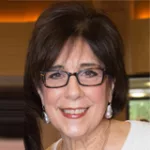Is “Retirement” Retiring?

“Retirement is dying…long live retirement!” It sounds counterintuitive.
Retirement, as we knew it when our parents and grandparents retired, differs from what it is becoming today. To them, retirement meant withdrawing, going “from” something rather than “to” something.
Retirees were concerned primarily about their financial future with little planning for a lifestyle that promotes longevity, focusing on aspects such as positive physical, emotional, and mental health.
Lee Iacocca, a retired Chrysler executive, admits to flunking retirement when he warned: “You plan everything in life, and the roof caves in because you haven’t done enough thinking about who you are and what you should do with the rest of your life.”
This is where holistic retirement planning comes in.
This new trend in retirement planning helps prepare future retirees for retirement’s financial and non-financial sides. When working with clients, we focus on designing a lifestyle plan they are going “to” rather than “from.”
Why the shift? We’re living longer. Retirees want to spend this time enhancing their lives and feeling fulfilled.
After leaving a career that brought structure, stimulation, and engagement with others, retirees often miss these and other aspects of their career. They ask, “Now what?” This can lead to stress, anxiety, and depression.
By complementing the financial plan with a non-financial plan (i.e., their new lifestyle), retirees will better cope with the challenges and thrive in this new phase of life.
Components of a non-financial plan include:
- Work. Whether it’s part-time, full-time, consulting, starting a new business, or volunteering, these different scenarios provide opportunities to remain physically and mentally active and socially engaged.
- Health & Wellness. This is the foundation for longevity and includes applying the energy to remain physically, mentally, and emotionally fit.
- Family & Relationships. Maintaining healthy relationships and staying engaged with family and friends is a priority for a fulfilling retirement. Because “gray divorce” (divorces over age 50) is common after retiring, couples need to communicate about what will remain the same and what will change after one or both retire.
- Leisure & Social. This is an expanding and dynamic part of life. Retirees are encouraged to spend this well-deserved time either as a spectator or in different types of leisure activities. Deciding where to live, experiencing travel they have longed for, and continuing existing hobbies or learning new ones all provide a creative outlet and new opportunities for social interaction.
- Personal Development. Finding opportunities to improve oneself through volunteering, formal or informal education, mentoring, spiritual development, and many other civic and personal virtues can bring personal meaning and purpose into one’s life.
While retirement might not be retiring, the traditional mindset when planning about this phase of life certainly is. In a recent Forbes article, Trey Smith called it “an era of choice” — a time when vibrant and long-lived individuals don’t retire at any age. Instead, they engage and continually reinvent themselves.





